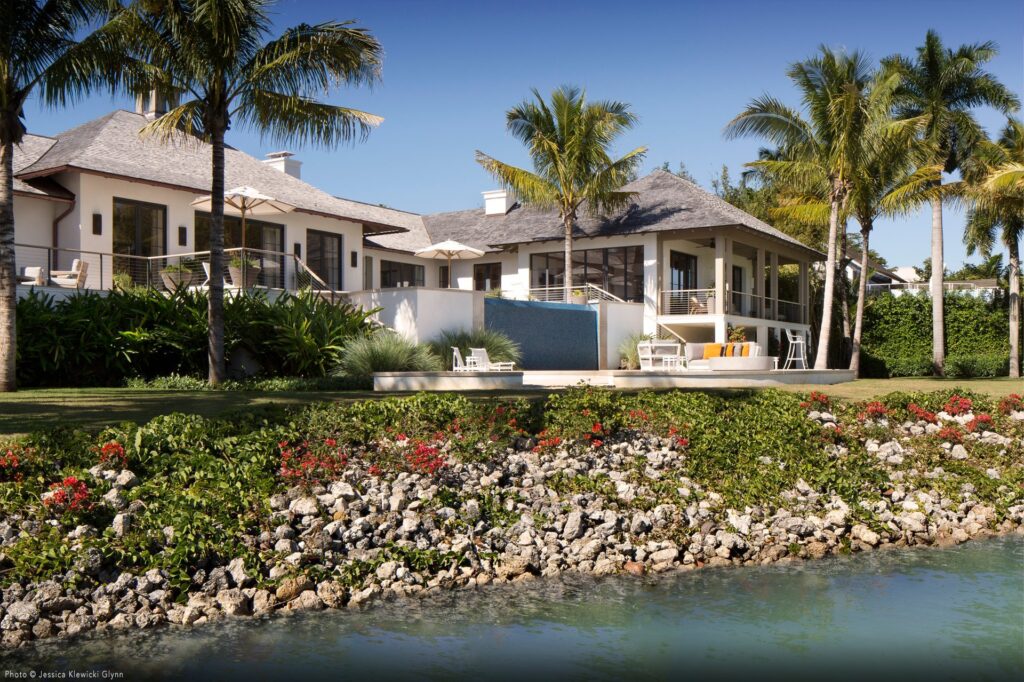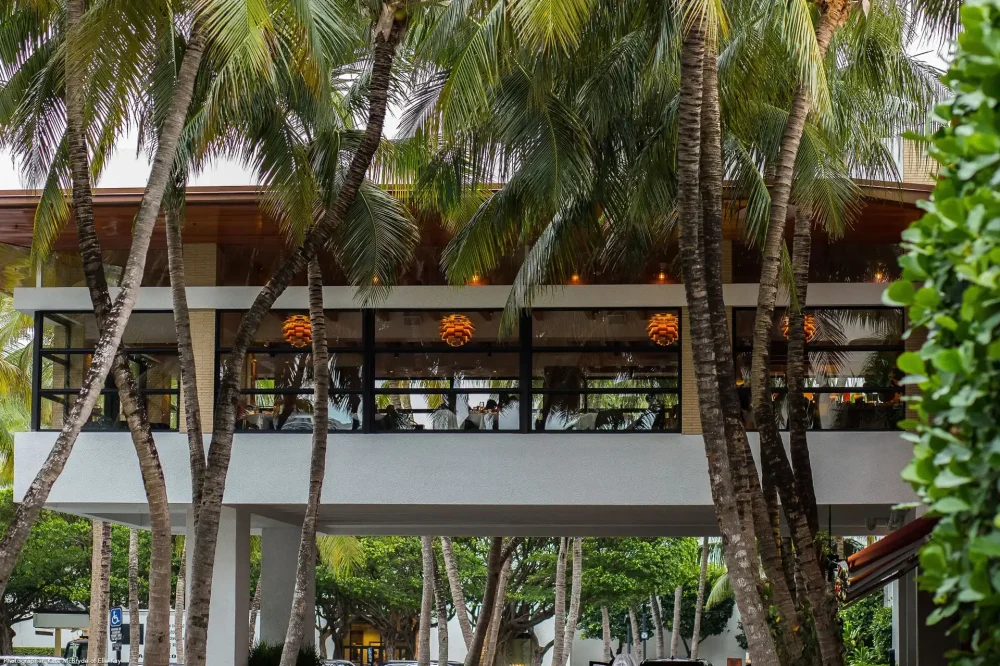There is no such thing as a “hurricane-proof” window
However, hurricane-resistant or impact-resistant windows and doors can protect homes from increasingly devastating storms.

Hurricanes wreak increasingly costly property damage in the U.S. with each passing hurricane season, in part because many property owners are unaware of hurricane-resistant windows’ and doors’ availability and tested, proven effectiveness in preventing building damage and destruction from a hurricane’s winds, pressure, and water.
Hurricane-related costs and damage estimates continue to rise
Consider that nine of the top ten most destructive hurricanes on record – as measured by damage in the billions of dollars – have occurred in the last 15 years alone. At the same time, insured losses from hurricane damage in the U.S. between 1985 and 2015 – adjusted for inflation – totaled more than half a trillion dollars, according to the National Oceanic and Atmospheric Administration (NOAA), with Florida, Texas, and New York leading the way in losses.
Despite continued advancements in weather forecasting and improved communication to better alert and prepare the public for a hurricane’s impending landfall, steadily rising hurricane-damage estimates are occurring, in part because strategies for preventing or lessening property damage from a hurricane’s winds, torrential rains, and storm surge remain relatively unchanged and largely inadequate.
Building penetration— the often overlooked and misunderstood cause behind catastrophic hurricane damage
When people think about hurricane damage, they often identify wind as the main culprit, and with good reason.
A hurricane’s strength is measured by the Saffir-Simpson Hurricane Wind scale, which according to the National Weather Service, “is a 1 to 5 rating based on a hurricane’s sustained wind speed….and estimates potential property damage.” This numerical rating is heard frequently in weather reports and news media updates describing a hurricane’s strength – such as “a Category 4 storm” – and in providing context for property owners and residents as to the potential for property damage and life-threatening conditions.
At the same time, videos shot from within hurricanes and viewed widely across social and news media invariably show trees blowing and bending over in high winds, building siding and roofs being ripped away by wind, reporters struggling to stand upright against howling winds, and wind-driven debris filling the air.
While hurricane-force winds undeniably cause significant property damage and destruction, oftentimes it isn’t the sheer force of the wind itself that’s responsible, at least initially, for a building’s destruction. Instead, the root cause and first step in a fast-paced march toward a home’s destruction can be traced to flying debris penetrating two inherently weak components of the building envelope – windows and doors.
“Imagine a house as a bubble or an envelope that you don’t want compromised,” explains Ryan Carlson, Research & Development Manager at Hope’s Windows, Inc. “It has a central pressure on the inside. During a hurricane, as the storm is parked over a house, the outside pressures are crazy – fluctuating all over the place for hours on end, while the pressure inside the house remains constant. At the same time, debris is pelting the house from all angles. It’s the moment this debris finally penetrates the house – usually because an opening wasn’t protected by a hurricane-proof window or hurricane-proof door – that catastrophic damage occurs.”
When a building is punctured during a hurricane, the pressures equalize instantly and the house tears itself apart, Carlson adds, as interior walls collapse and the roof lifts off the building. And, even if the structure survives the initial pressure change and subsequent wind forces flowing through the now compromised opening, the resulting rain, and sea, river or stormwater now also flowing through the house inflicts additional, often irreversible damage.
Preventing building penetration in a hurricane—why tape, plywood, and even hurricane shutters aren’t up to the task
When it comes to securing a building’s most vulnerable components – its windows and doors – against a hurricane’s various forces, residents of hurricane-prone areas, and even those living in interior portions of the U.S., are all too familiar with storm preparations either through personal experience or by witnessing these pre-storm scenes unfold through media reports. The annual rituals of securing loose objects, placing sandbags around doors, boarding up windows with plywood, and even taping window glass in the mistaken belief that doing so will provide extra strength and help prevent shattering are all woefully inadequate against Mother Nature’s fury and a Category 3 named storm’s 111-mph-plus winds and flooding rains.
Instead, certified, hurricane-resistant windows and hurricane-resistant doors are the preferred and most effective solution to preventing building penetration, as compared to the aforementioned hurricane preparations.
First, installing tape on glass windows will not provide added strength or wind resistance, nor will it prevent the glass from breaking or shattering when it’s struck by wind-driven debris.
Additionally, installing plywood over doors and windows also has numerous shortcomings as compared to a building constructed or retrofitted with hurricane-tested windows or doors, because the plywood installation depends on several variables, any one of which can lead to the structure being left unprotected and vulnerable to penetration by debris, including:
- The homeowner has to be present or able to travel to the property to install the plywood before the storm’s arrival, or rely on someone else to perform the task.
- Openings need to have already been measured and the plywood pre-cut to fit the windows and doors and stored on site. If it isn’t, plywood needs to be readily available for purchase in the local marketplace, which it often isn’t as a hurricane approaches.
- Plywood isn’t certified as impact-resistant.
- Plywood is susceptible to being torn from the building by a hurricane’s forces.
- Aesthetically, boarded up windows and doors aren’t a good look for a luxury home, and raise the likelihood of damaging the façade by repeatedly screwing into it with each approaching storm.
Hurricane shutters – while offering more window and door protection against penetration than plywood – also present several weaknesses as compared to hurricane-resistant windows and doors that meet the stringent Miami-Dade impact and wind-loading hurricane standards established after 1992’s Hurricane Andrew. Shutters, like plywood, require the homeowner to be present or able to access the property in time to lower the shutters on the building openings. Shutters also require periodic testing and routine maintenance to ensure they are operable when they’re needed on short notice, as compared to hurricane-resistant windows that protect a structure 24/7/365 from penetration without requiring maintenance.

Impact standards for hurricane-resistant windows and doors
Windows offering protection from hurricane forces are referred to by consumers using various terms, including “impact-approved,” “impact-certified,” “hurricane-tested,” “Miami-Dade,” and more often than not – “hurricane-proof windows.” Since a “hurricane-proof window” doesn’t exist, the only term important to remember when evaluating windows’ level of protection is “impact-resistant.” This is not a subjective term, nor one that can be applied arbitrarily to any window by a manufacturer. Rather it is a testing standard as defined by the American Society for Testing & Materials (ASTM). Only after passing ASTM’s stringent standards can a window be certified as “impact-resistant.”
Certain areas of the country – namely Florida and the Gulf of Mexico states – have included window and door impact-resistance standards as part of their building codes and insurance regulations.
For example, the Florida Building Code mandates that windows be certified as impact-resistant if the structure is located within one mile of the coast where wind speed is 110 mph or greater. Miami-Dade and Broward Counties have taken impact-resistance a step further with what is considered by most to represent the gold standard in hurricane-resistant windows and doors – the High Velocity Hurricane Zone (HVHZ) designation. This section of the Florida Building Code specifies that every exterior opening must be protected by either shutters or impact-resistant windows and doors that were subjected to and passed even more stringent testing and performance parameters, as compared to those products approved for use outside an HVHZ.
To aid consumers, contractors, and architects in identifying products approved for use in HVHZ-designated areas, the Florida Building Commission established The Florida Product Approval System listing building products approved for local or state use.
“The state identifies what the pressure criteria is for various window or door openings,” Carlson explains. “Products that pass testing and meet the criteria are then entered into a statewide database of approved products homeowners and architects can use when choosing windows, entry doors, patio doors and garage doors.
“Miami-Dade Broward County HVHZ is the highest criteria when it comes to window and door testing and certification,” Carlson adds. “For example, in testing for HVHZ-rated products, the pressures and duration that the windows and doors are subjected to are ramped up higher, as compared to testing on non-HVHZ approved products.
Hope’s vast, comprehensive selection of fully tested and certified hurricane impact-resistant windows and doors is the industry’s largest and can meet virtually any commercial or residential structure’s needs by offering a solution that beautifies while it protects.
How hurricane-windows and impact-resistant doors are tested
The most important thing to remember when it comes to testing and certifying hurricane impact-resistant windows and doors is that the system as a whole is being tested, rather than just individual components.
“The system has to work and pass together,” Carlson explains, “Using a window as an example, the glass, the frame, the anchors that attach it to the building, and the hardware are all tested. In one of our structural tests, we’ll subject the window system to 150% of its designed pressure resistance and intentionally overload it to see how it performs under higher pressures. Part of the testing includes hitting the glass with a 2×4 missile shot from a cannon with enough force to break the glass – which it’s designed to do when subjected to a specific maximum force. This ensures that the chosen glass makeup remains together (to protect the building envelope) because of the liner sandwiched between the glass panes. We’ll then shoot the window framing with the same 2×4 missile, and then subject the system to additional pressure testing to check its longevity.”
Up to four hours of continuous pressure testing is modeled as though a storm were sitting directly over the house, Carlson explains. Pressure is quickly added and removed from the window system in numerous cycles, followed by a vacuum being applied and removed. Throughout it all, the window components have to stay together as one system, preventing penetration.
“Air and pressure penetration isn’t the only parameter being tested either,” Carlson says. “Hurricane-tested or impact-resistant windows and doors have to pass a water test – which is a much higher hurdle – to measure how well they prevent water from infiltrating a structure. Next, they have to pass a forced-entry test to show that the window or door withstands a burglar’s attempts. And finally, it’s tested to ensure that it can be unlocked and opened even after being subjected to these various external forces, because it functions properly is a life-safety issue.”
Hope’s windows and doors — impact-resistant, tested, and approved
Hope’s steel and bronze, impact-approved windows and doors provide proven hurricane protection with an ageless beauty and elegance that are the ultimate compliment to elite properties.
Hope’s impact-resistant windows and doors have tested to Florida Building Code (FBC) Impact, High Velocity Hurricane Zone (HVHZ), and Miami-Dade County TAS standards, are third-party certified to meet ASTM air, water, structural, impact and forced entry requirements, and don’t require hurricane shutters.
In addition to offering the industry’s largest sizes of impact-tested solid bronze windows and doors, Hope’s products also provide total design flexibility with impact-resistant product approvals for fixed, swing-out, and top hung windows, and swing-out doors, as well as custom-shaping capabilities and configurations.
It’s these types of design and hurricane-protection options that led the architect for Florida’s The Grill at Bal Harbour to choose Hope’s Jamestown175TM Series steel windows and doors and 5000 SeriesTM pocket door when designing the new restaurant.
Rakesh Patel is the senior project architect for the Hillstone Restaurant Group. When he was given the green light to design a new restaurant in Bal Harbour, FL., he knew that only one manufacturer of steel windows and doors could help him achieve his unique vision, and at the same time, meet the stringent Miami-Dade impact and wind-loading hurricane standards.
“Hope’s was the obvious choice,” Patel explains, “because it’s one of the very select few, if not the only, steel window manufacturer that meets Miami-Dade standards. To us, Hope’s Windows is a form of art.”
Pushing the boundaries of curved glass, as well as impact-resistant windows, is the restaurant’s 13-foot wide by 12-foot high laminated, curved-on-plane glass section and hot-rolled steel frames, coupled with custom-designed and engineered vertical, sliding, impact-resistant windows.
Hope’s impact-resistant window and door products include:
- Jamestown175™ Series steel windows and doors
- Empire Bronze™ Jamestown175™ Series
- One55™ Series
- Landmark175™ Series swing doors
- 5000 Series™ lift and slide doors
While the industry will probably never be able to develop a window or door that is truly “hurricane-proof,” fully tested and certified hurricane impact-resistant windows and doors are the solution today for protecting structures from increasingly devastating storms. Hope’s Windows offers the industry’s largest selection, as well as total design flexibility with the industry’s largest sizes of impact-tested solid steel and bronze windows and doors.



